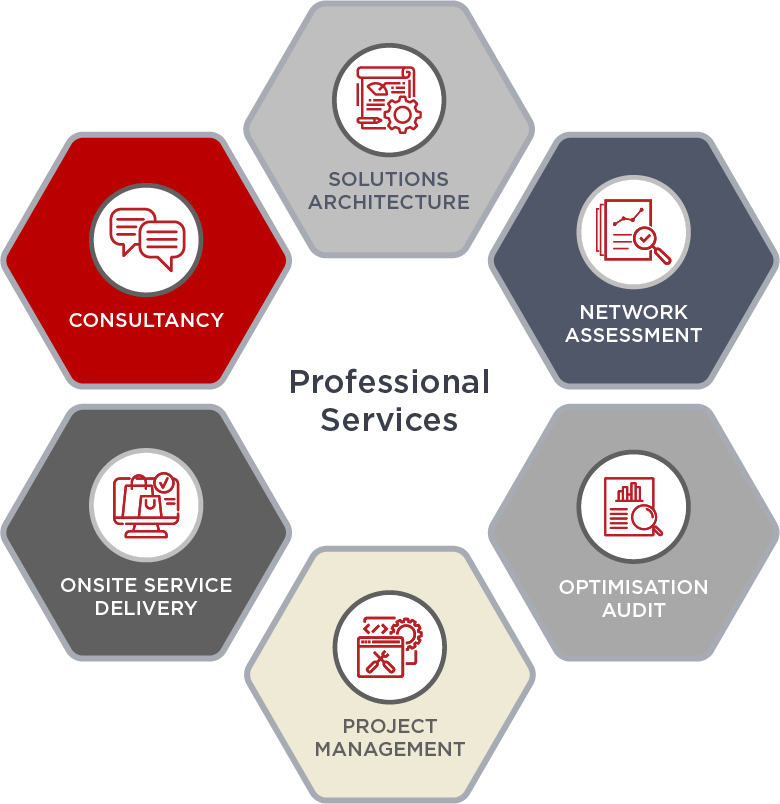- Home Page
- Data Networks
- Network Professional Services
- Network Upgrade
Network Upgrade
If you want to have something you've never had, you have to do something you've never done
Thomas Jefferson
Enquire Now




Network managers are facing a digital mandate
Uptime is no longer a measure of success.
Network teams are judged on their ability to eliminate security risk, deliver high-quality services, manage end-user experience, improve application performance, and support cloud readiness. It’s a big ask!
All these new metrics point to one inescapable reality – many companies will need to modernise and upgrade their networks.
Preparing a Network for the digital age
Technology is changing faster than at any time in history and the network is at the coalface.
As companies tackle new initiatives, network modernisation becomes essential. Digitised businesses need more bandwidth and more mobility. They require more powerful access controls and effective security technology.
Business drivers for a network upgrade
How to know when it’s time to upgrade to new and improved hardware and software? With technology advancing at an alarming rate, it seems like new solutions have barely been implemented when something better hits the market.
Most businesses can’t afford to upgrade even annually, however, there are several key drivers which make an upgrade sensible. These include:
- Lack of end-to-end network visibility
- Network audit identifying security vulnerabilities
- Digital initiatives requiring high-availability and high-performance with minimal latency, jitter or packet loss; and granular quality of service (QoS) controls.
- New technologies opening up new ways of working such as 5G, cloud computing, IoT
- Manufacturers no longer supporting existing hardware or software with security updates

MobileCorp Network Upgrade Service
As Steve Jobs famously said:
“Start with the customer experience and work backwards to the technology.”
In the case of a network upgrade, start with the business outcome that is required, and work backwards to determine the degree of technology or network upgrade needed to achieve the outcome.
MobileCorp Network Upgrade inclusions
MobileCorp customers often undertake a network upgrade to enable a new digital service.
At MobileCorp our network specialists offer a professional service that includes:
- consultancy and advisory service
- network assessment or network optimisation audit (if required)
- network modelling
- solution architecture
- network design
- project management
- solution build and deploy

How to approach a Network Upgrade
A network upgrade can vary from a simple refresh of certain components through to an extensive upgrade to meet a new set of digital requirements.
MobileCorp follows four steps which make up an outline approach to tackling a network upgrade.
Step 1. Identify Stakeholders
Dependent on the size of the company this could vary in number but will cover those accountable for network operations, security, service management, finance and a C-suite executive.
Step 2. Model Future Use
When planning for a network upgrade in the digital era, it is critical to understand exactly how the network is being used currently and to model how the network will be used in the future.
This process should begin with identifying the company’s business goals over the next five years.
It will be important to understand how much real-time communications traffic will traverse the network, to assess the state of mobility in their networks.
For many companies, Wi-Fi is becoming the primary network access technology, with users relying on laptops, tablets, smartphones, and other mobile devices to access IT services.
Step 3. Understand The Impact of Cloud
In the average enterprise, 45 percent of all network traffic is traceable to the public cloud, such as SaaS or IaaS-based services. This has profound effects on a network upgrade.
On the LAN side of things, this trend will lead to major growth in north-south traffic patterns, from the access layer of the network out to the Internet egress. Many of these flows will be bandwidth-intensive and require granular QoS features, particularly cloud-based video and collaboration solutions.
The network will need to provide enough bandwidth and traffic engineering capabilities to serve these applications.
As cloud applications proliferate, networks will also require programmatic, cloud-aware policy controls.
The cloud has WAN implications as well. Many remote sites will now require direct cloud access via an Internet breakout. SD-WAN solutions will provide secure Internet breakouts from remote sites with granular QoS and path selection across multiple links.
Step 4. Evaluate New Technologies
Some points to consider when evaluating new technologies:
- Adopt an end-to-end architecture.
- Next generation Wi-Fi and multi-speed ethernet, depending on how long it has been since the last upgrade, will offer new value. New generation Wi-Fi with robust RF management techniques can optimise connectivity for rich media and real-time communications. Ethernet will enable a faster wired access layer and maximise the gigabit bandwidth.
- Exploit network automation especially for security response, network capacity planning and programmatic policy controls.
- Distributed enterprises will need SD-WAN. Enterprises leverage SD-WAN to improve application performance, enable public cloud access, and enhance network security. SD-WAN solutions deliver automation and programmatic control across branch offices, allowing network engineers to architect a distributed, end-to-end network security infrastructure as well as global QoS policies. Local gateways enable hybrid networking, where lower-cost Internet connectivity can supplement or replace bandwidth-constrained MPLS circuits.

Our Tech Partners
Leaders we are proud to partner with.





















News and Insights from MobileCorp
Data and IP Networks
Speak to our MobileCorp Representative
To get started with a technology solution, call us on 1800 243 252
Enquire Now





